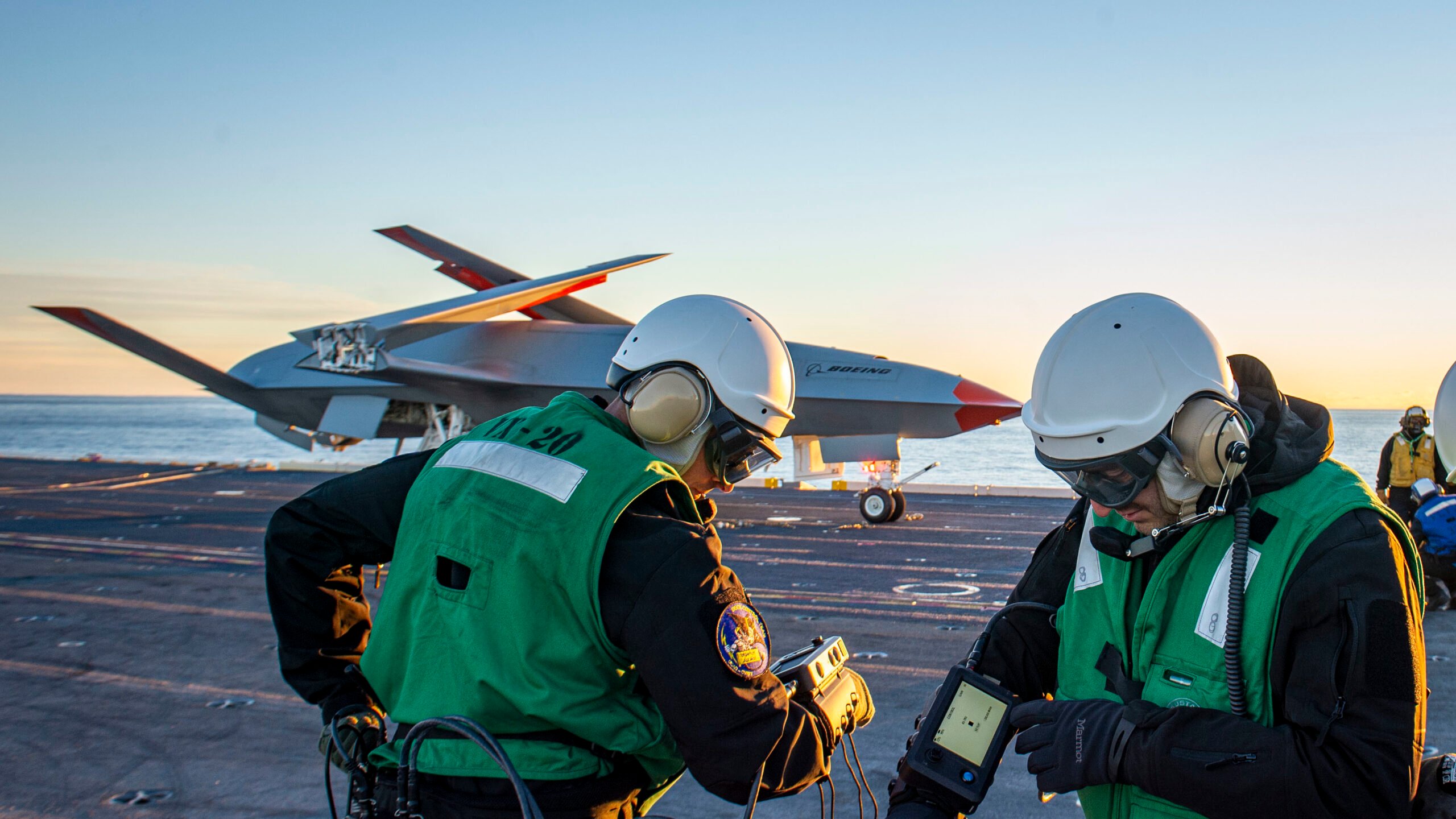
A Boeing unmanned MQ-25 aircraft is given operating directions on the flight deck aboard the aircraft carrier USS George H.W. Bush (CVN 77). (U.S. Navy photo by Mass Communication Specialist 3rd Class Brandon Roberson)
SEA AIR SPACE 2024 — The Navy’s MQ-25 Stingray hasn’t yet hit the carrier deck, but Boeing believes now is the time for the sea service to start thinking about upgrades for the tanker drone that the company says could open up new missions such as gathering surveillance or striking enemy targets.
The aerospace giant showed off such a lethal variation of the MQ-25 model outfitted with two Lockheed Martin-made Long Range Anti-Surface Missiles during the Sea Air Space conference earlier this week.
Troy Rutherford, Boeing’s MQ-25 program manager, said Boeing and the Navy are in the early stages of discussing alternate configurations for the MQ-25, a drone with a75-foot wingspan that the service currently plans on using as an aerial refueler and is scheduled to become operational in 2026 after carrier trials next year.
Because the MQ-25 started off as Boeing’s offering for the Navy’s defunct Unmanned Carrier-Launched Strike & Surveillance program, “that capability to haul weapons or sensors is inherently still built in the airplane. It’s just not something that’s currently activated,” Rutherford told Breaking Defense in an interview.
While fielding the tanker version remains the priority, Boeing and the Navy are “now starting to open up conversations about what else can it do as we start to look at air wing of the future,” Rutherford said.
Asked by Breaking Defense about conversations with Boeing about alternative missions for the MQ-25, Naval Air Systems Command said, “The MQ-25 program is intended to pave the way for future multi-mission UASs [unmanned aerial systems] to keep pace with emerging threats. The primary mission of MQ-25 today is aerial refueling, which is set for IOC [initial operational capability] in 2026.”
The Navy intends to buy 76 MQ-25s over the program of record and has requested $553 million to procure three aircraft in fiscal 2025. The Navy awarded Boeing a $657 million contract modification for two MQ-25s late last month, and a request for proposals for the first batch of low-rate production aircraft is expected in May, said Rutherford.
Capt. Daniel Fucito, who leads the Navy’s unmanned carrier aviation efforts, told Breaking Defense this week that the two recently ordered aircraft will be the first MQ-25s to be built with components for which the Navy and Boeing were forced to find replacements due to issues with parts obsolescence.
“The production line is maturing,” Fucito said, adding that addressing the obsolescence issues “was the right thing to do at the time.”
Congress approved a Navy request to reprogram funding to address the MQ-25 obsolescence issues in March, reported Inside Defense then.
A Collaborative Combat Aircraft for the Navy?
Discussions about future MQ-25 configurations come as the Navy also begins publicly talking about potential interest in drone wingmen, known also as collaborative combat aircraft, envisioned to fly alongside manned aircraft.
Rear Adm. Stephen Tedford, the Navy’s program executive for unmanned systems and weapons, told reporters on Monday he believes Navy CCAs should have a service life of a “couple hundred hours” and a unit cost of under $15 million.
Fucito — who leads the Navy’s CCA effort as well as the MQ-25 program — characterized discussions as “very young,” adding that the service’s experiences operating the MQ-25 onboard the carrier deck will “set the stage” for a future CCA program.
“At some point in time, we will reach out to the industrial base [with a request for information],” he said. “As far as what that date is, it’s not firm. We have some learning to go.”
The Air Force is bullish on its own CCA program, having identified five vendors competing to build the first round of drones, with a downselect to two or three companies anticipated to occur over the next few months.























